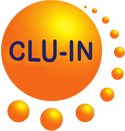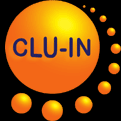Search Result
ENHANCED BIOLOGICAL STABILIZATION OF HEAVY METALS IN SEDIMENT USING IMMOBILIZED SULFATE REDUCING BACTERIA BEADS WITH INNER COHESIVE NUTRIENT
Li, X., L. Dai, C. Zhang, G. Zeng, Y. Liu, C. Zhou, W. Xu, Y. Wu, X. Tang, W. Liu, and S. Lan.
Journal of Hazardous Materials 324(Pt B):340-347(2017)
A series of experiments was conducted for treating heavy metal-contaminated sediments sampled from the Xiangjiang River. The treatment combined sulfate-reducing bacteria (SRB) immobilized within beads of polyvinyl alcohol. Sodium lactate provided an inner cohesive nutrient. The activity of the SRB within the porous structure and its huge specific surface area provided a convenient channel for fluid movement while protecting the cells against metal toxicity. Lower leaching toxicity and removal efficiencies of 76.3% Cu, 95.6% Zn, 100% Pb, and 91.2% Cd were observed. The beads could be reused 5 times with good efficiency. X-ray diffraction and energy-dispersive spectra analysis indicated the heavy metals could be transformed into stable crystal texture, which was attributed to the carbonyl and acyl amino groups. http://ee.hnu.cn/eeold/php/news/pic/yunfeirandompic_1481468089.pdf
Journal of Hazardous Materials 324(Pt B):340-347(2017)
A series of experiments was conducted for treating heavy metal-contaminated sediments sampled from the Xiangjiang River. The treatment combined sulfate-reducing bacteria (SRB) immobilized within beads of polyvinyl alcohol. Sodium lactate provided an inner cohesive nutrient. The activity of the SRB within the porous structure and its huge specific surface area provided a convenient channel for fluid movement while protecting the cells against metal toxicity. Lower leaching toxicity and removal efficiencies of 76.3% Cu, 95.6% Zn, 100% Pb, and 91.2% Cd were observed. The beads could be reused 5 times with good efficiency. X-ray diffraction and energy-dispersive spectra analysis indicated the heavy metals could be transformed into stable crystal texture, which was attributed to the carbonyl and acyl amino groups. http://ee.hnu.cn/eeold/php/news/pic/yunfeirandompic_1481468089.pdf
The Technology Innovation News Survey welcomes your comments and
suggestions, as well as information about errors for correction. Please
contact Michael Adam of the U.S. EPA Office of Superfund Remediation
and Technology Innovation at adam.michael@epa.gov or (703) 603-9915
with any comments, suggestions, or corrections.
Mention of non-EPA documents, presentations, or papers does not constitute a U.S. EPA endorsement of their contents, only an acknowledgment that they exist and may be relevant to the Technology Innovation News Survey audience.





